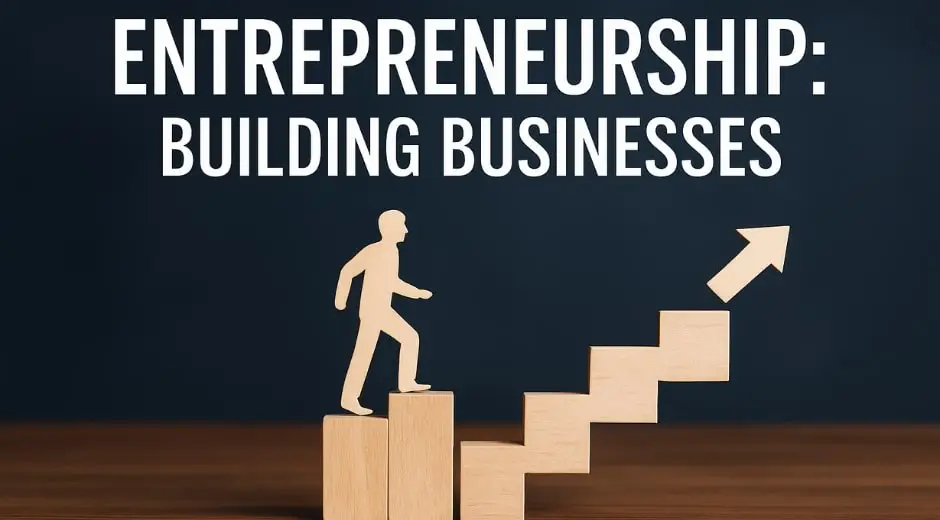The New Era of Entrepreneurship: Building Businesses That Scale Faster
Entrepreneurship has entered a new era. Advances in technology, more accessible capital, and smarter growth playbooks mean founders today can build businesses that scale faster than earlier generations — but speed without structure is risky. To scale well, teams must combine product-market clarity, repeatable systems, disciplined funding, and customer-led growth. This article outlines the practical elements founders need to focus on to accelerate responsibly and sustainably.
1. Start with True Product-Market Fit
Rapid scaling begins with a foundation: product-market fit (PMF). Many early-stage failures come from trying to grow before the market truly values what you offer. PMF means customers choose your product repeatedly because it solves a real problem. Measure retention, referral rates, and willingness-to-pay rather than vanity metrics. Thought leaders at Harvard Business Review emphasize rigour in validating PMF before committing to large-scale acquisition spend.
2. Build Repeatable Systems and Processes
Systems are the plumbing that turn one-off successes into scale. Document customer onboarding flows, standardize sales plays, and automate repetitive tasks. A clear operations manual — covering hiring, product launches, support escalation, and billing — reduces friction and allows new hires to ramp quickly. As Forbes notes, process discipline lets teams move faster because less time is spent reinventing the wheel.
3. Choose the Right Growth Engines
Not all growth channels scale equally. Determine which engines deliver sustainable, unit-economic positive growth:
- Paid acquisition — works when unit economics are strong and CAC payback is reasonable.
- Product-led growth — letting the product create adoption through viral or freemium hooks.
- Sales-led — high-touch channels for complex, enterprise solutions.
Many modern startups combine two or more engines: product-led acquisition to lower early CAC, with an enterprise sales motion to capture larger accounts. Entrepreneur magazine provides numerous founder case studies showing hybrid growth approaches that scale efficiently. (Entrepreneur).
4. Fund in a Way That Matches Your Scale Plan
Faster scaling often requires capital — but financing should align with your growth model. Bootstrapping preserves control and forces unit economics discipline, while venture capital accelerates customer acquisition and product expansion. Convertible notes, revenue-based financing, and strategic corporate partnerships are alternatives that may suit particular stages. Thoughtful capital choices reduce dilution and ensure runway matches key milestones.
5. Design for Operational Leverage
Operational leverage is how revenue growth outpaces cost growth. Software companies benefit from low marginal cost of serving additional customers; service businesses must systematize delivery and invest in scalable talent models. Invest in instrumentation (analytics, observability) so you can spot margin compression early and act fast.
6. Hire Slow, Onboard Fast
People scale companies, but hiring mistakes at speed kill momentum. Adopt a “hire slow, onboard fast” approach: take time to assess cultural fit and core skills, then deliver rigorous onboarding so new employees contribute quickly. Use role-specific playbooks and success metrics for the first 30–90 days to reduce ramp time and protect productivity during growth spurts.
7. Customer-Led Roadmaps
Listening to customers drives smarter prioritization. Structured feedback programs — advisory boards, NPS follow-ups, and product usage cohorts — help you focus on improvements that increase retention and lifetime value. Scaling companies that ignore customers risk building complexity without proving incremental value.
8. Prepare for Regulatory & Market Shifts
Faster scaling often exposes firms to new regulatory regimes, especially when expanding internationally or entering regulated verticals (healthcare, finance, energy). Early legal and compliance investment saves costly reorganizations later. Monitor market trends — for example, energy and commodities movements can affect cost structures for manufacturing or logistics-heavy startups; staying attuned to broader macro factors is essential.
9. Use Data—But Don’t Be Data-Paralyzed
Data enables smarter decisions but can also slow teams if overused. Focus KPIs around unit economics, retention cohorts, CAC payback, and margin dynamics. Build dashboards that leaders consult daily and empower teams with experiment frameworks so you can test, learn, and iterate quickly.
10. Case Examples & Resources
- Many successful startups grew rapidly by combining product-led onboarding with a sales motion for larger accounts; case studies in our Scaling Startups guide show how to structure those teams. - If you need funding models and alternatives, see our primer on Funding Options for Growth to match capital to objectives. - For further reading on scaling practices and founder playbooks, resources at Harvard Business Review, Forbes, and Entrepreneur offer deep dives and interviews with successful leaders.
Action Plan: 90-Day Sprint to Scale Readiness
Use this short sprint to prepare your company to scale faster:
- Validate PMF with one retention and one revenue metric (30 days).
- Document three core processes: onboarding, sales play, and support (45 days).
- Run two growth experiments focused on the channel with the highest expected ROI (60 days).
- Review capital plan and secure runway aligned to milestones (90 days).
Conclusion
Building businesses that scale faster in the new era is possible — but it requires deliberate trade-offs. Founders must validate demand, design repeatable systems, choose the right growth engines, and match capital to strategy. Speed without structure increases risk; structure without speed misses opportunity. The best outcomes come from combining both: rapid iteration grounded in repeatable processes, disciplined metrics, and customer obsession.
Simple Entrepreneurship

Strategic Partnerships: The Hidden Power Behind Business Growth and Lasting Networks
Strategic Partnerships explores how collaboration, trust, and shared vision create strong business growth and redefine networking in the modern economy.

Brand Authenticity: The New Currency of Modern Marketing
Brand Authenticity explores how genuine storytelling, trust, and transparency build lasting relationships and drive success in modern marketing.

Sustainable Investing: Building Wealth with Purpose and Long-Term Impact
Sustainable Investing explores how conscious investors combine profitability with social and environmental responsibility to shape a better financial future.

Adaptive Leadership: Guiding Entrepreneurs Through Constant Change
Adaptive Leadership explores how entrepreneurs can navigate uncertainty, motivate teams, and turn change into strategic opportunity in a fast-evolving world.













